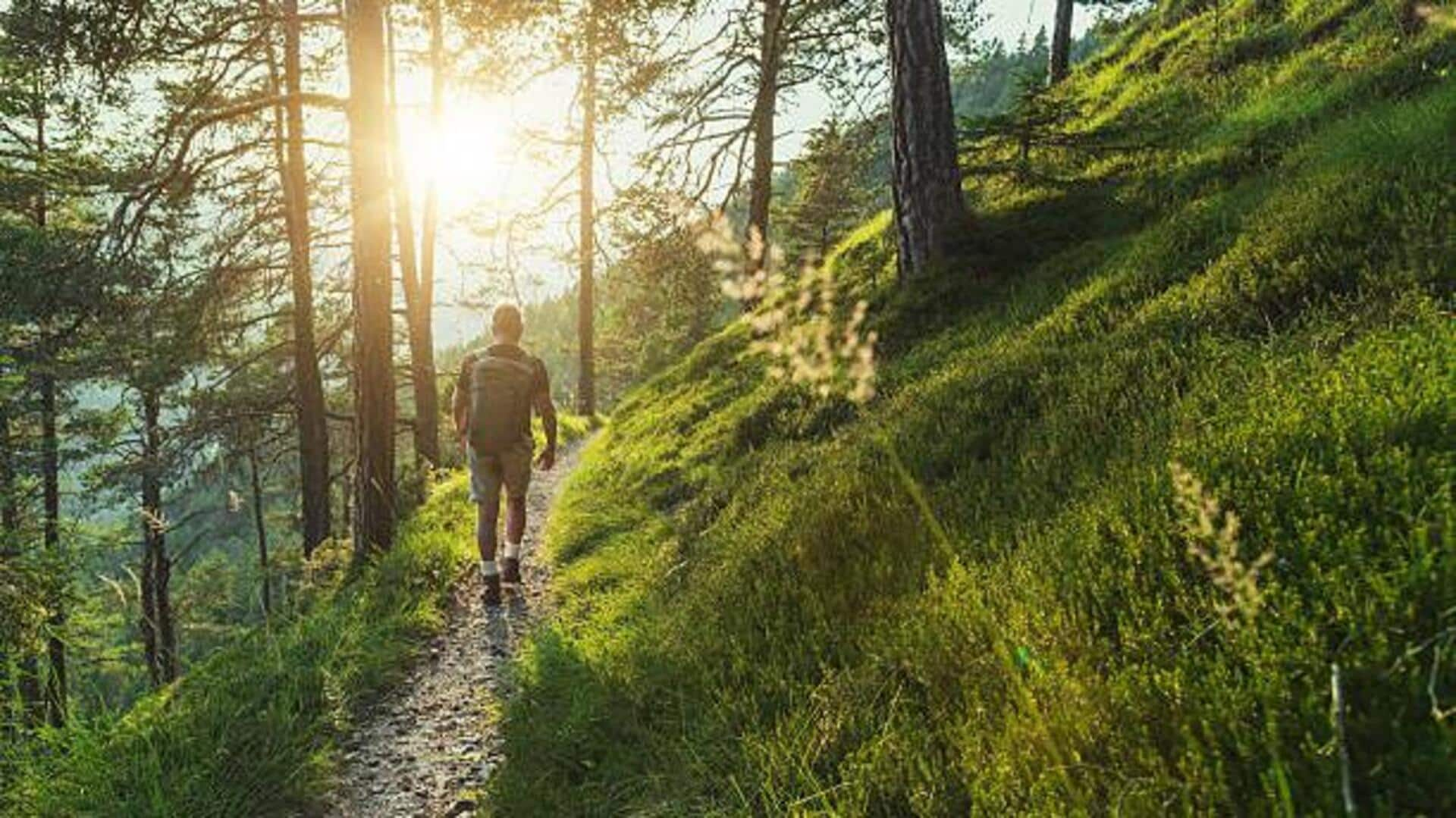
Wildlife corridor treks: Discover nature in its purest form
What's the story
Trekking along wildlife corridors lets you discover the secret superhighways of the animal kingdom. These natural pathways connect ecosystems, allowing animals to migrate safely. Not only are these routes vital for biodiversity, but they also offer adventurers the chance to experience some of the planet's most vibrant landscapes. Read on to learn why trekking along wildlife corridors is so special and how it supports conservation.
Importance
Understanding wildlife corridors
Why are wildlife corridors important? Wildlife corridors are vital for sustaining healthy ecosystems. They allow animals to move between habitats without human interference, which is crucial for breeding, feeding, and seasonal migration. These pathways of survival often weave through human-dominated landscapes, making their conservation a complex but crucial task. Hiking these routes not only advocates their significance but also offers a unique opportunity to experience the splendor of undisturbed nature.
Preparation
Planning your trek responsibly
When embarking on a trek through wildlife corridors, you should aim to leave no trace behind. This involves staying on designated trails, removing all waste, and observing wildlife responsibly by keeping a safe distance. Opting for eco-friendly lodging and contributing to local conservation efforts can also amplify your positive influence on the region you're visiting.
Engagement
The role of local communities
Local communities are the backbone of wildlife corridor conservation. By interacting with these communities, whether through guided tours or educational programs, trekkers can foster a deeper understanding and appreciation for the unique ecological importance of these areas. Plus, by buying stuff made or services offered by locals, you are directly supporting the preservation of wildlife corridors. Your money goes to the right place!
Equipment
Gear essentials for corridor trekking
Having the right gear can make a huge difference in ensuring you're comfortable and prepared while trekking through wildlife corridors. Sturdy yet lightweight hiking boots, clothing suitable for the weather conditions, and a dependable backpack are essentials. Plus, a good pair of binoculars is a worthwhile investment. It allows you to appreciate wildlife from a distance without causing them distress.
Conservation
Leave No Trace Principles
Following Leave No Trace principles is vital in wildlife corridors. This entails planning and preparing; traveling and camping on durable surfaces; disposing of waste properly; leaving what you find; minimizing campfire impacts; respecting wildlife, and being considerate of other visitors. By adhering to these rules, you can ensure your visit supports conservation instead of hindering it.